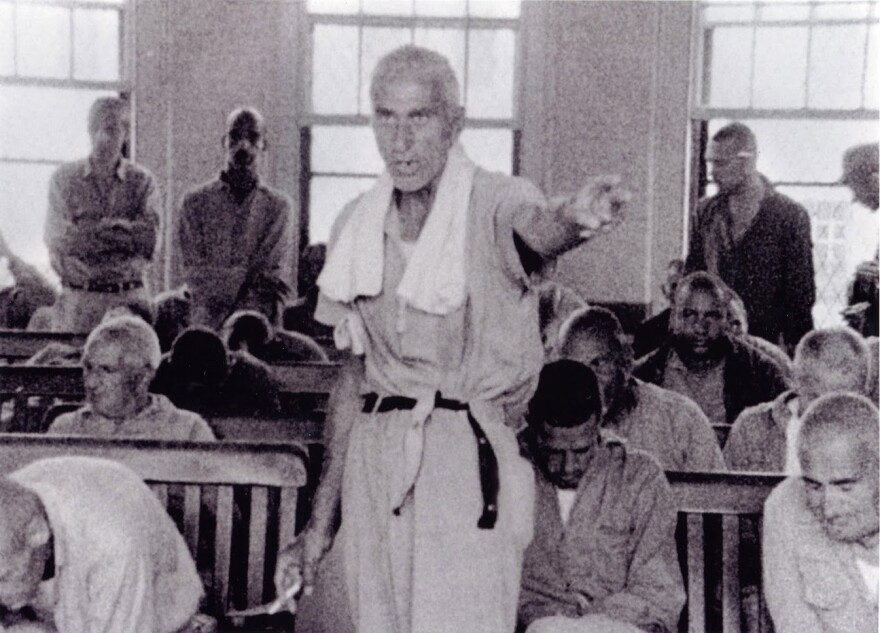In 1966 Bridgewater State Hospital for the Criminally Insane gave filmmaker Frederick Wiseman unprecedented access. Wiseman documented staff at the Massachusetts hospital herding patients, often heavily drugged and naked, through bare rooms and corridors.
The resulting documentary, Titicut Follies, shook up the medium and launched Wiseman's innovative, Oscar-winning career. A ballet adaptation of the film premieres in New York Friday night.
The ballet and the film it's based on are both deeply unsettling. "The inmates at Bridgewater were treated very badly, by and large," Wiseman says. "But many of them had committed the most outrageous crimes imaginable."
Some patients had abused children; others committed murder, and even cannibalism.

The state of Massachusetts sued to have Titicut Follies banned, arguing the film invaded inmates' privacy. Wiseman countered that he had permission from the hospital and from the patients' families. Eventually a judge ruled Titicut Follies could only be shown for educational purposes, and that restriction remained in effect for more than 20 years.
So how did this grim story become a ballet? Wiseman saw something in particular when he was filming more than 50 years ago.
"One can't help but notice some of the gestures and physical movements of people who are psychotic," he says.
The filmmaker is also a ballet fan; he's made two movies about the form. But he says it worried him that all of the productions he's seen on stage were basically about relationships.
"Men-women. Men-men. Woman-woman. And I realized that I wasn't seeing ballets that dealt with all the other things that were going on in the world," he says.

So when the Center for Ballet and the Arts at New York University asked him to create a dance based on one of his films, he immediately chose Titicut Follies.
The challenge, he says, was to "present something ugly within the framework of a form that's inherently beautiful."
For help, he turned to choreographer James Sewell. For the past three years Wiseman, now 87, has made regular trips to Minneapolis to work with Sewell. The two have grappled with how to turn the tics and gestures of these people experiencing psychosis — as well as their brutal treatment at the hands of the guards — into the movements of classical ballet.
"It has to tread to some place that gets us to the place where we are cringing a little bit," Sewell says. "But I have to find a way to do that also with the beauty of movement. That's kind of the sugar that helps the medicine go down."
So he drew on such classical ballets such as Giselle and La Bayadère and he had his dancers watch the documentary.
In one unforgettable scene a naked inmate called Jim is taunted by guards. The dancer who portrays the patient is Myron Johnson. He founded Ballet of the Dolls, a Minneapolis company that created edgy, classical productions for 18 years. But three years ago, Johnson suffered a mental breakdown and spent months in a psychiatric hospital, he says.
"So I know what a taboo subject mental health can be," Johnson says. "So I was like: Awesome, make a ballet about it and get people talking!"
Raising questions about how society deals with mental illnesses is important for Sewell, the choreographer, but Wiseman sees it differently.
"The impetus for the ballet is not to affect social change," Wiseman says. "But to make as good a ballet as one can with the material — as I try to make as good a movie as I can with the material. Then, the use or the consequences of the work is out of your hands."
Intentional or not, Wiseman has affected social change through his films. Now, the ballet version of Titicut Follies will give audiences a different way of seeing the people Wiseman depicted in his documentary 50 years ago.
Copyright 2024 MPR News

